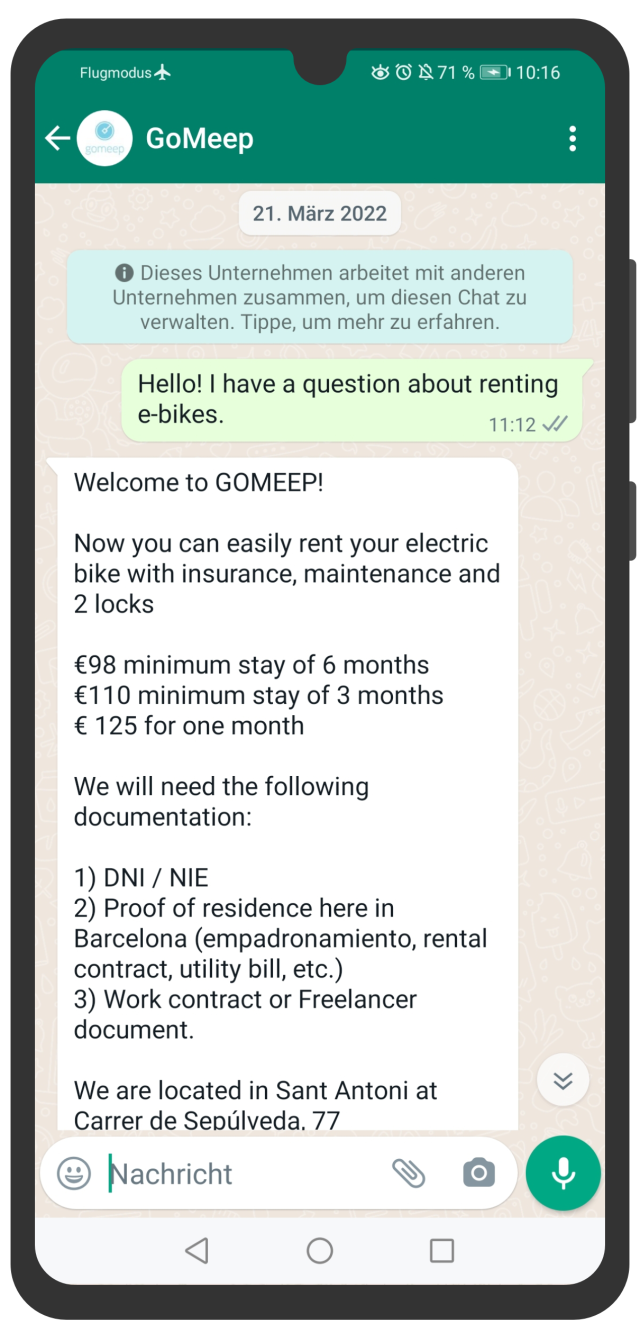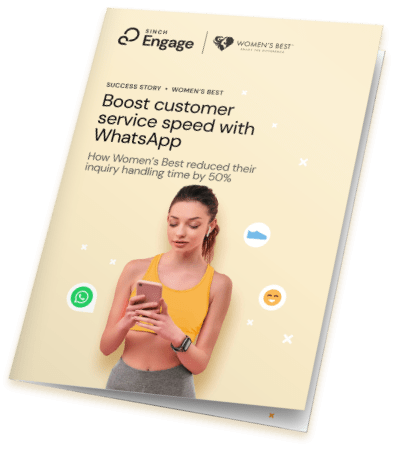What are chatbots, and what are the advantages of chatbots for companies? How do customers feel about them? What types of bots exist, and how can businesses use them effectively? The following guide answers these questions, and shows you how easy it is to get started with your first bot.
From Tesla to Spotify to Google: many companies use chatbots successfully. According to a recent industry report, chatbots are on the rise as a brand communication channel. Between 2019 and 2020 the usage of bots increased by 92%. While in 2019, about 11% of brands talked to their customers via chatbots, in 2020 that number was close to 25%. And what might be even more surprising: consumers really like chatbots!
Of course, the launch of the popular ChatGPT has accelerated this development in the past months even more.
So, how can you take advantage of this, and use the conversational technology successfully for your business? What are other companies doing? How can you build your own bot? And how do customers really feel about chatbots? In this guide, we'll answer the most important questions around chatbots for businesses.
What's a chatbot?
If you've ever selected buttons as answers in a web chat with a company or asked Alexa to play a song for you, you've already interacted with chatbots. So, what exactly is a chatbot?
Basically, a chatbot is a computer program that enables interaction between humans and technology. Originally, chatbots used to be strictly text-based communication programs. Nowadays, there are also voice bots, like the smart home assistants from Google, Apple, or Amazon. This is why experts differentiate between chatbots and voice bots. However, many times, due to its original terminology, the technology is simply called chatbot or bot.
The different types of chatbots
Aside from differentiating between voice-based and text-based bots, there are also different technologies for designing chatbots. The three main types of chatbots are rule-based bots, AI-based bots, and application-based bots.
- Rule-based bots are virtual assistants that show the user pre-programmed answers, but are at a loss when users don't ask their questions using the pre-defined keywords the bot can recognize.
- AI-based chatbots use natural language processing (NLP) to have a smart conversation with customers.
- Application-based bots combine rule-based and smart dialogue systems.
There are a variety of use cases for chatbots. Many times you'll find chatbots used in, marketing, customer service, and for consultations in industries such as e-commerce, real estate, or automotive.
The rise of chatbots
Chatbots aren't new. The logic expert Alan Turing developed the world's first chatbot, ELIZA, in 1966. Of course, a lot has changed since then, even if it took a while for chatbots to be integrated into our everyday lives. In fact, chatbots only got their real break-through with the development of the channels that make their usage particularly useful: messaging apps.
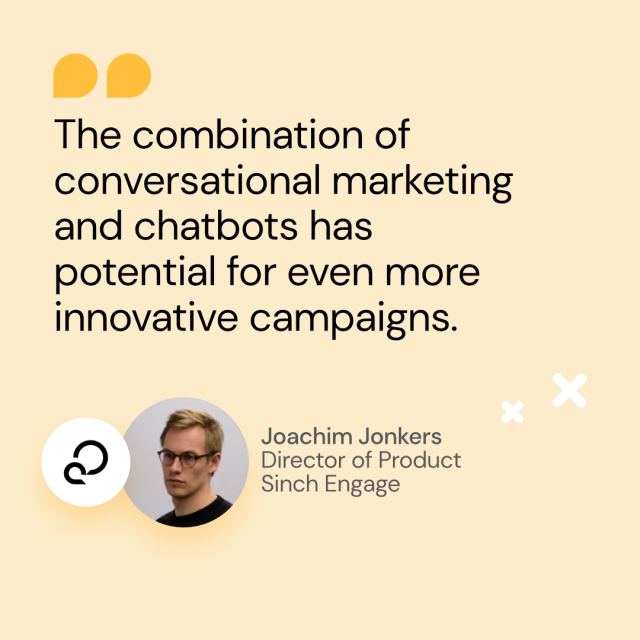
The strong link between chat programs and messaging apps is not surprising, because messenger services are the perfect communication platform for chatbots. Apps like the Messenger from Meta (formerly: Facebook Messenger), WhatsApp or the Chinese WeChat have become user favorites around the world. So much so, that, in some regions, they have become more popular than social networks, given that they are more versatile and easier to use.
Instead of constantly having to install new apps, it's simpler to just use a messaging service that allows you to do anything you want, from chatting to making video calls to sending files, on one single platform. Companies have realized that, and adapted their services, so customers can now communicate or pay directly on their favorite messaging app. A lot of these services are supported by messenger bots.
For customers, this means that they can pay bills or get information immediately, even outside of regular business hours, and without having to be put on hold until the next customer service representative becomes available.
By the time Facebook announced an automated communications platform at the f8 conference in 2016, it was already pretty clear that chatbots would become one of the most sought-after digital trends, especially in combination with messaging platforms.
Chatbots and messaging apps
For a long time, the Messenger from Meta was the main chatbot channel. Now, other messaging apps, such as Telegram, Instagram, and WhatsApp have also started enabling automation features for bots.
⚠️ Important! You can't use the regular WhatsApp app commercially. Companies have to use either the WhatsApp Business app or the WhatsApp Business API that's provided through business solutions like Sinch Engage. However, you can only use chatbots on WhatsApp with the WhatsApp Business Platform.
However, every messaging platform has its intricacies that you need to keep in mind. Different messaging apps attract different users, and the way the apps are used also varies, depending on the platform.
For instance, on Instagram, users like to connect with a brand they like through Instagram Direct Messages. On Facebook, on the other hand, the Messenger is used to ask general questions about a business, and WhatsApp users like to engage in conversations with brands through the app. So, that's something to keep in mind when launching a chatbot on a messaging app.
Advantages of chatbots for companies
For businesses, chatbots have a lot of advantages. They can:
- answer customer inquiries immediately (and help customers right away),
- respond to requests 24/7,
- resolve complaints very fast,
- help customers through digital processes, such as a payment or making a reservation, and
- reduce the work load of your service team, which, in turn, will have more time to focus on more complex queries.
Chatbots also can also improve your business' bottom line.
- Business leaders say that chatbots have increased sales on average by 67%.
- In a recent survey, 57% of businesses said that chatbots deliver large ROI for minimal effort.
- An industry report by the Massachusetts Institute of Technology has found that 90% of businesses have recorded measurable improvements in the speed of complaint resolution, and 80% of companies noted a larger call volume processing through chatbots.
- Chatbots can reduce customer support costs by 30% (they can answer faster, and they free up agents).
It's therefore not surprising that the chatbot market is booming. While the market size for chatbots in 2016 reached 190.8 million US dollars, it's estimated to reach 1.2 billion US dollars in 2025.
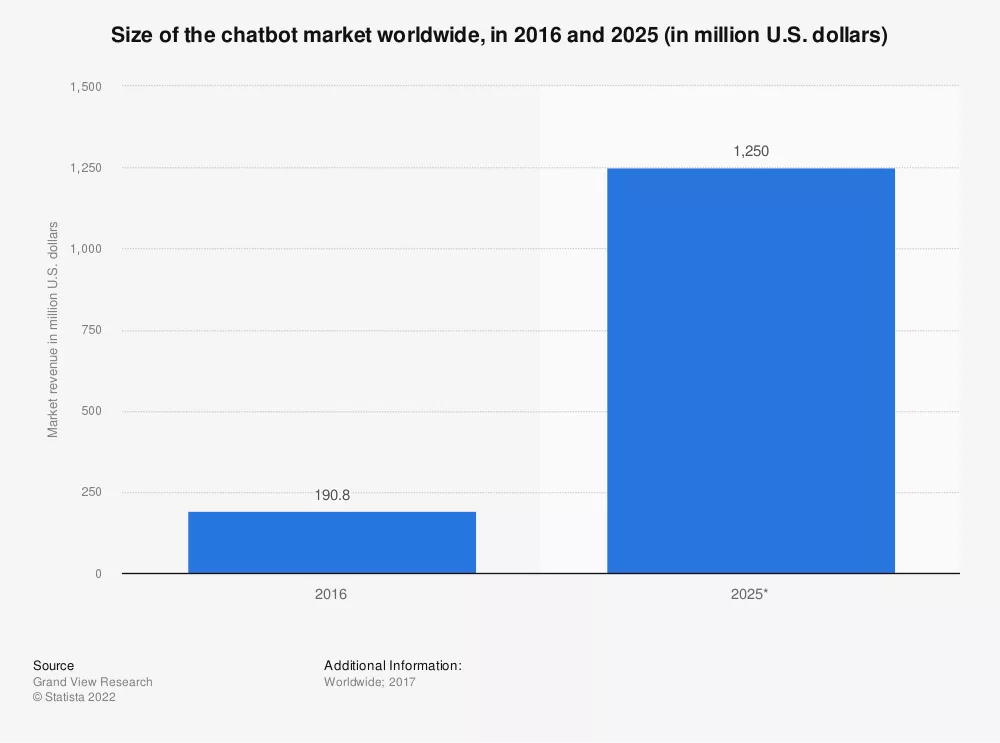
Against popular belief: customers respond positively to chatbots!
Many companies are hesitant to implement chatbots because they're afraid that customers won't like them. The truth is that the quality of the bot makes all the difference. If customers interact with a well-designed chatbot that's helpful, they usually have a positive response. In fact,
- 80% of customers have a positive experience with chatbots.
- 22% of shoppers trust chatbot recommendations for purchasing a product.
- Using a high-quality chatbot leads to a more engaged audience, with 80 to 90% response rates. And even the worst experiences still reach response rates between 35 and 40%.
Customers are also becoming more familiar with the technology, and they understand that a bot is simply a helpful tool, and not an alien robot ready to take over the world. Surveys show that a better understanding of chatbots also leads to a more positive consumer response.
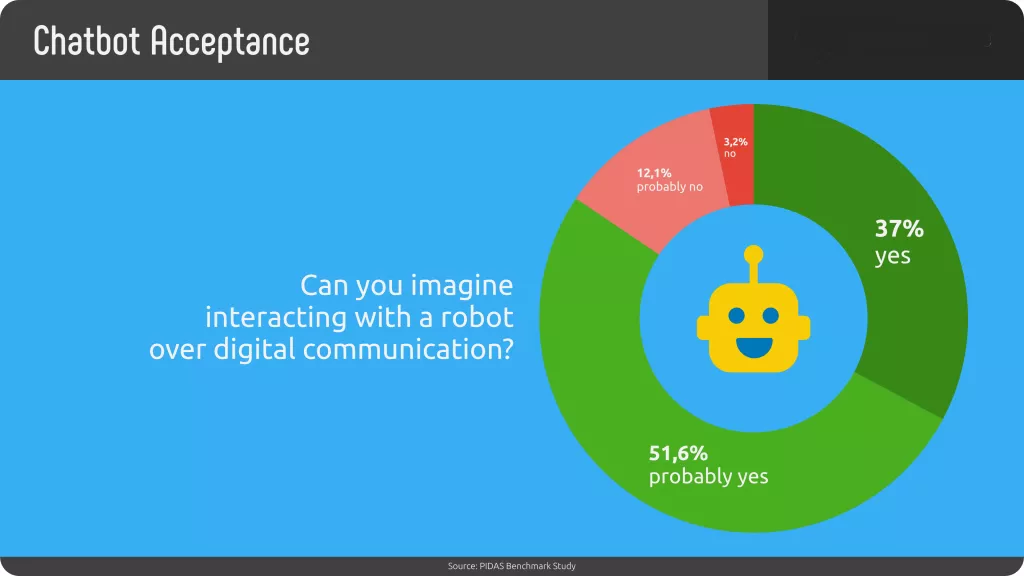
Overall, chatbots can save time and money for you and your customers, and improve the customer experience.
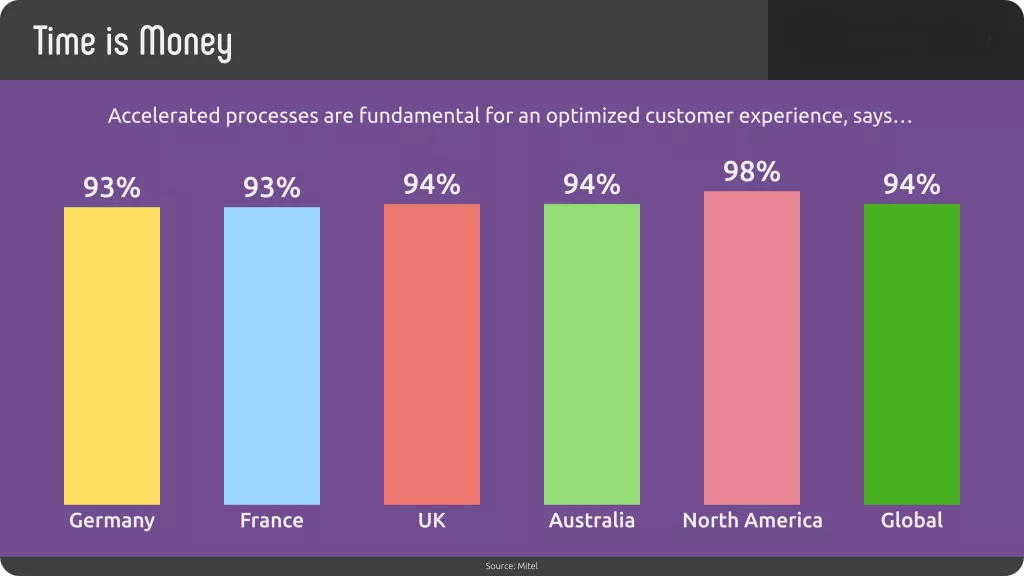
How companies are using bots successfully
There are already many companies that prove the benefits of using chatbots in a business context.
GOMEEP: Answering FAQs
GOMEEP is an e-mobility start-up based in Barcelona. They offer short-term and long-term rentals of e-bikes and e-scooters. Most of their customer inquiries reach them on WhatsApp, so the company decided to introduce a WhatsApp chatbot who can answer the most frequent questions around their service.
With the chatbot solution through Sinch Engage, GOMEEP ended up having a lower cost per acquisition compared to the revenue generated by each customer.
Women’s Best: first-level support
The women’s sports brand, Women’s Best, offers advice and customer service on WhatsApp or via Apple Business Chat. The company uses a messenger bot to pre-qualify customer inquiries. It asks for the language, country, name, and e-mail address. It then hands the customer over to a human agent, who processes and resolves the customer inquiry.
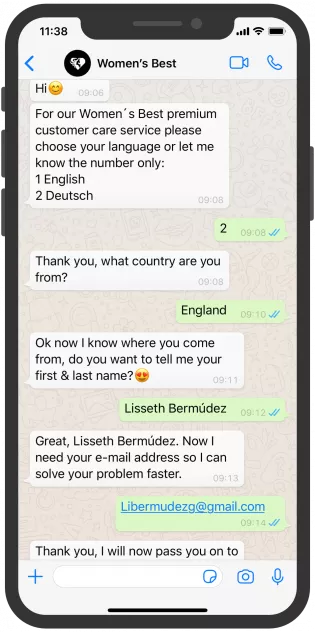
However, the Women's Best bot doesn't stop there. The company also uses automated responses to further engage with users and increase sales by sending customers shopping suggestions
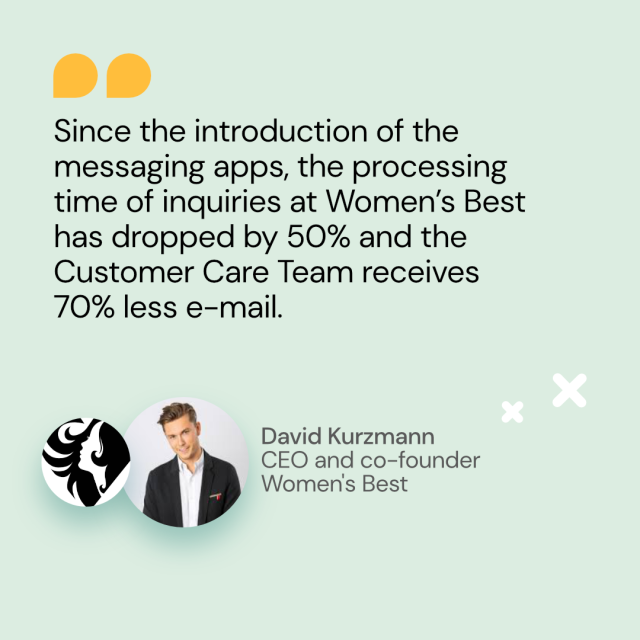
Kiehl’s Malaysia turns customer inquiries into sales
The luxury brand Kiehl’s is part of the L’Oréal Group and specializes in high-quality natural skin care products. At Kiehl’s Malaysian branch, the company receives a particularly large number of inquiries on Instagram. The team was finding it increasingly difficult to respond to all of their customers’ requests.
So, Kiehl’s set up an automated solution through Instagram’s messenger API. Frequent questions thus receive automated answers. In addition, Kiehl’s established a hand off protocol. This allows bots to seamlessly pass along more complex queries to employees.
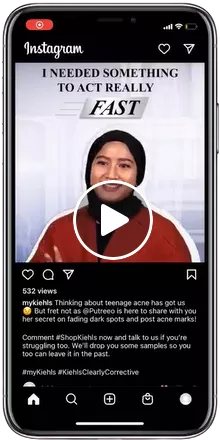
The company was thus able to use the messenger API for Instagram in their customer service to answer inquiries faster, and in a way that was more tailored to the customers’ individual needs. Through this, they were able to build closer relationships with their customers, and they ended up converting more inquiries into sales.
⭐ Results: After only two months, Kiehl’s Malaysia had:
- 30% more qualified leads on Instagram compared to other channels.
- a 20% conversion rate from consultations to sales.
- reduced the time it took new customers to book a beauty consultation to two days.
By implementing messenger API for Instagram, we have not only scaled our conversations through different entry points such as Instagram Feed, Instagram Stories, mentions, and direct messages, but have also improved our response time to customer inquiries.
Eda Lim, Head Of Digital, Luxury & Professional Division, Kiehl’s Malaysia
European Commission: helping thousands of travelers
Discover EU is an initiative led by the European Commission that helps 18-year-old EU citizens discover Europe by train. As many of these young Europeans are first-time travelers, they naturally find themselves in many situations where they require help on their trips.
After launching the initiative, frequent questions, such as: “What do I do if I missed my train?” or “Where does my train leave from?” ultimately were becoming challenging to handle by the staff of support agents during traditional office hours and across different time zones. As a solution, an advanced AI chatbot was developed together with Sinch Chatlayer in order to answer the travelers’ most common questions, which ended up helping thousands of young European explorers on their journeys.
In the first month, the chatbot solved more than 700 questions, and handed over approximately 150 questions to a live support agent.
European Commission
Getting started with a chatbot for your business
Some companies, especially small and mid-sized businesses, haven't started using chatbots yet because they're afraid that it'll be very complicated and require a lot of IT knowledge. This doesn't have to be the case, though.
Sinch Engage, for example, has an integrated (and very easy-to-use!) drag-and-drop chatbot builder for almost any messenger app, and is ideal for simple chatbot tasks, such as answering frequent questions or pre-qualifying leads. It's easy to set up, and requires no IT skills. There are even pre-built templates that you can use.
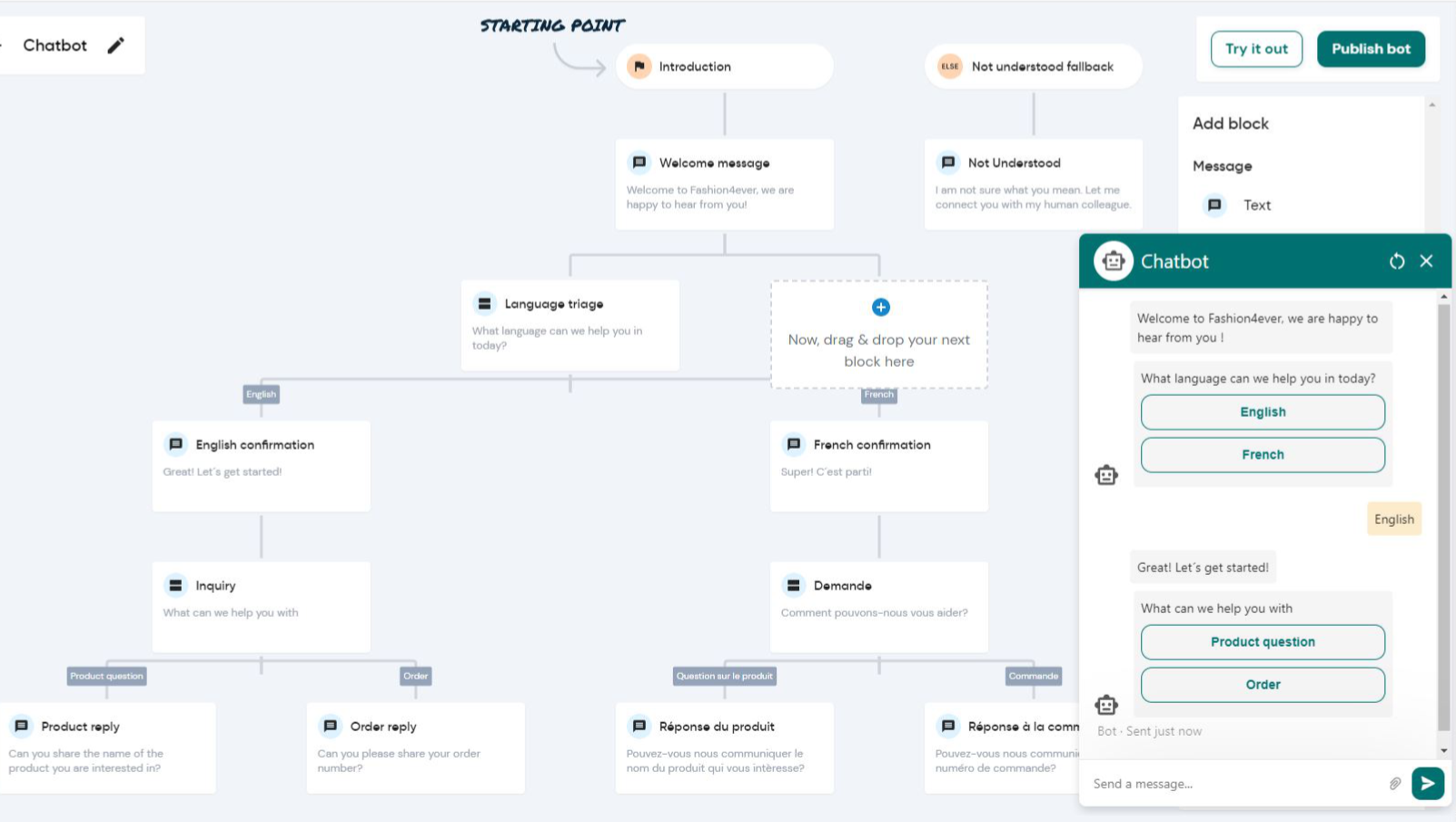
If you're looking to integrate a bot into your company's website, app, or need a more complex AI-based bot for a messenger application, there are also some ready-to-go solutions out there that don't require coding skills. For more complex use cases, Sinch Engage also offers an AI-based chatbot upgrade that can engage users in sophisticated conversations.


